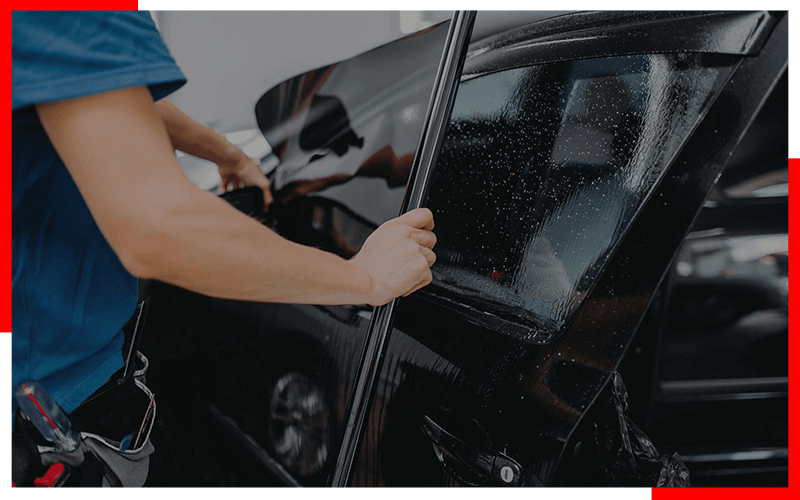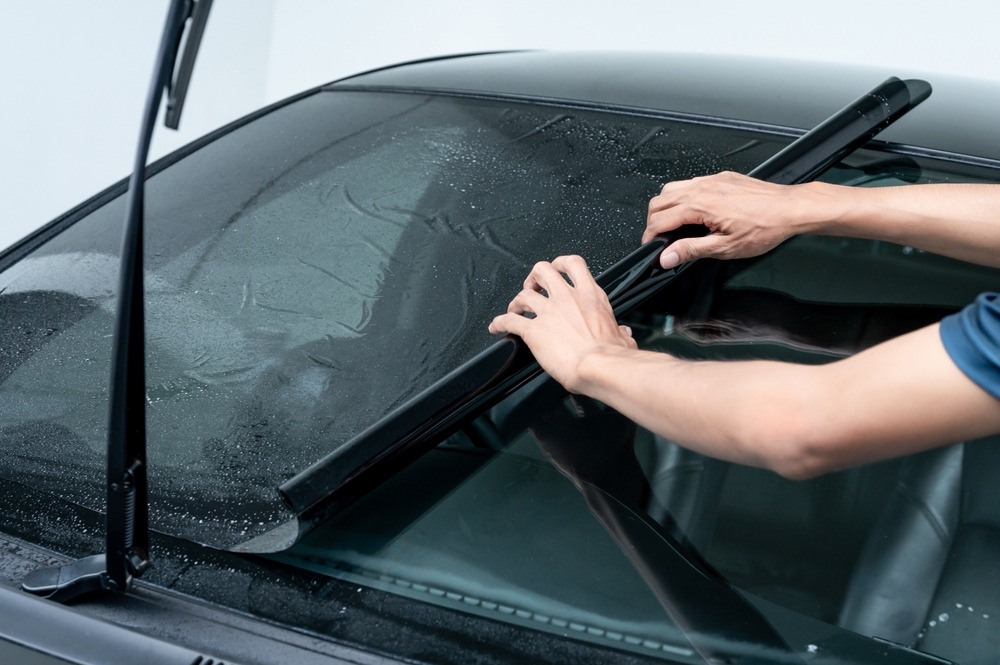Checking Out the Different Kinds Of Home Window Color for Cars and Their Benefits

Dyed Home Window Color
Colored home window color is a prominent option among automobile owners seeking to boost personal privacy and minimize glare while maintaining a trendy appearance. This kind of color is produced by integrating dye right into the glue layer, which is after that applied to the windows of the lorry. The key charm of dyed home window color hinges on its ability to provide a cosmetically pleasing appearance without compromising functionality.
Among one of the most considerable benefits of colored window tint is its capacity to block hazardous UV rays, helping to shield both travelers and the vehicle's inside from sun damage. In addition, this tint efficiently reduces glow, contributing to a more comfortable driving experience, particularly throughout bright daytime conditions. The growing of window color additionally includes a layer of personal privacy, making it more challenging for outsiders to see inside the car.
However, it is necessary to note that while colored window color offers various benefits, it might not give as much heat denial as other kinds of tints. Moreover, its long life can be impacted by direct exposure to long term sunshine, possibly causing fading in time. In general, dyed home window color continues to be a popular alternative for those focusing on visual appeals and basic sunlight protection.
Metalized Window Tint
Metalized window color represents an innovative alternative for automobile proprietors seeking to enhance both efficiency and aesthetic appeals. This kind of tint includes little metallic particles that mirror sunlight, providing a variety of benefits that interest many car proprietors. One of the primary advantages of metalized window color is its exceptional warm denial capabilities, which can significantly reduce the interior temperature of a car. This not only improves comfort for guests yet also reduces the load on the lorry's air conditioning system, possibly improving gas effectiveness.
Moreover, metalized colors supply boosted durability contrasted to dyed movies, making them immune to fading and scraping. This durability makes sure that the color keeps its effectiveness and look over time, providing long-lasting value.
In addition, metalized window tint can boost personal privacy and protection by making it harder for outsiders to see inside the car. The reflective top quality of the tint can additionally discourage potential theft, as valuables are less noticeable (window tinting). While it might disrupt some electronic signals, such as general practitioner or cellular phone reception, the general benefits make metalized window color an engaging selection for several cars and truck owners
Ceramic Window Color
Offering sophisticated innovation and exceptional efficiency, ceramic home window color has actually emerged as a top selection for discerning automobile owners. This cutting-edge film is composed of sophisticated ceramic fragments that supply substantial warm denial while maintaining clarity and visibility. Unlike traditional tints, ceramic window color does not depend on metal or dye, which can conflict with electronic signals from devices such as general practitioner and cellular see here phone.
One of the standout benefits of ceramic window tint is its outstanding UV security. It obstructs approximately 99% of unsafe ultraviolet rays, thereby safeguarding both the car's interior and its owners from sun damages. Additionally, this sort of color improves personal privacy without endangering exposure, making it a functional choice for everyday chauffeurs and high-end lorries alike.
Ceramic home window color likewise boasts toughness; it is resistant to fading and scratching, making certain resilient performance. Additionally, its non-reflective nature implies it does not create glow, adding to more secure driving problems. For those looking for a costs tint remedy that integrates appearances with performance, ceramic window color attracts attention as an exceptional choice, delivering improved comfort and defense when driving
Carbon Window Tint
When it comes to window tinting options, carbon window color has actually gained appeal for its mix of performance and affordability. This kind of tint is composed of carbon fragments, which provide an unique matte surface that improves the aesthetic allure of automobiles. Among the main benefits of carbon home window tint is its capacity to obstruct a significant amount of unsafe UV rays, shielding both the vehicle's interior and its residents from skin damages and fading.
Additionally, carbon home window color uses outstanding heat denial properties, decreasing the requirement for too much cooling and boosting fuel performance. Unlike colored colors, carbon tints do not fade gradually, preserving their effectiveness and appearance for years. This sturdiness makes them a useful choice for auto owners looking for long-term worth.
Additionally, carbon window tint is non-metalized, which implies it does not interfere with electronic signals, making it suitable for cars furnished with GPS, Bluetooth, and official site various other wireless innovations. The equilibrium of cost, performance, and visual charm has established carbon home window color as a favored option for many vehicle proprietors. Inevitably, it works as a dependable service for those looking to boost comfort while making certain style.
Factory Tint
Factory tint, also called OEM tint, refers to the tinting that is related to automobile home windows throughout the production procedure. This sort of color is usually incorporated right into the glass itself, providing a consistent appearance and regular levels of shading throughout all home windows. The main function of factory tint is to lower glow and boost guest comfort while providing a degree of UV protection.

While factory color provides basic advantages, it may not click to read provide the very same degree of heat denial or privacy as higher-grade aftermarket colors. Car owners seeking boosted efficiency might take into consideration additional tinting options, while still valuing the visual charm and functionality manufacturing facility color supplies.
Conclusion

Nonetheless, it is vital to note that while colored home window tint supplies many advantages, it may not offer as much heat being rejected as various other types of colors. For those seeking a costs tint option that combines looks with functionality, ceramic home window color stands out as an exceptional selection, delivering improved comfort and defense on the road.
When it comes to window tinting alternatives, carbon window tint has actually gained popularity for its mix of performance and cost.Manufacturing facility color, also understood as OEM color, refers to the tinting that is applied to lorry windows throughout the production procedure. The exact level of color can differ depending on the vehicle maker and version, with some vehicles featuring a lot more substantial tint on rear home windows than on front home windows.